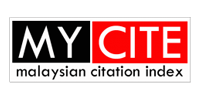Design and Fabrication of Automatic Temperature Control for Chicken Shade
DOI:
https://doi.org/10.58915/aset.v3i.581Keywords:
Automation, Internet of Things, Smart FarmingAbstract
One of the most crucial sectors to explore in Malaysia are agriculture and poultry. Indeed, there is a strong correlation between agricultural growth and economic growth. The inconsistent weather in Malaysia will cause the temperature to increase and decrease, and this problem will affect the health of the chicken. Small-sector farmers cannot afford the high cost of installing and maintaining the temperature control system. Therefore, new effective technological approaches were required to continuously improve the productivity, profitability, and sustainability of major farming systems. An automatic temperature control system was designed to control the temperature in the chicken shade. This system was controlled by Arduino UNO, which was programmed using Arduino IDE software. The system started to operate when the sensor detected the temperature in the chicken shade above 28oC. The exhaust fan, pump, and water sprinkler are the main components in this system that control the temperature in the chicken shade. The system reduced the temperature in the chicken shade by 1oC to 3oC. The system also affects the rate of chicken growth. By lowering the temperature in the chicken shade, the rate of the chicken growth increases. The chicken starts to grow faster in week 3 at 5 weeks. Starting in week 3, the chicken in controlled room temperature was 46g heavier than the average chicken weight in a normal room. In week four, the average chicken weight in a controlled room was 116.25g heavier than in a normal room. In week six, the average weight of chicken in the controlled room was 884.5, while in normal room conditions, it was 732g. The initial bar graph and week six bar graph for both conditions show significant differences in the chicken's growth rate.
References
Lau, K. X., Leow, P. L., Jamian, J. J., Arsat, R., Abdeltawab, A. A. A., Rahman, S. S., ... & Mohamed, A. Temperature distribution study for Malaysia broiler house. In 2018 2nd International Conference on Smart Sensors and Application (ICSSA), (2018, July) pp. 69-73.
Wicaksono, D., Perdana, D., & Mayasari, R. Design and analysis automatic temperature control in the broiler poultry farm based on wireless sensor network. In 2017 2nd International conferences on Information Technology, Information Systems and Electrical Engineering (ICITISEE), (2017, November) pp. 450-455.
Van der Klein, S. A. S., Silva, F. A., Kwakkel, R. P., & Zuidhof, M. J. The effect of quantitative feed restriction on allometric growth in broilers. Poultry Science, vol 96, issue 1 (2017) pp. 118-126.
Barzegar, S., Wu, S. B., Choct, M., & Swick, R. A. Factors affecting energy metabolism and evaluating net energy of poultry feed. Poultry science, vol 99, issue 1 (2020) pp. 487-498.
Lara, L. J., & Rostagno, M. H. Impact of heat stress on poultry production. Animals, vol 3, issue 2 (2013) pp. 356-369.
Maman, A. H., Özlü, S. E. R. D. A. R., Ucar, A. H. M. E. T., & Elibol, O. K. A. N. Effect of chick body temperature during post-hatch handling on broiler live performance. Poultry science, vol 98, issue 1 (2019) pp. 244-250.
Sun, X., Zhang, H., Sheikhahmadi, A., Wang, Y., Jiao, H., Lin, H., & Song, Z. Effects of heat stress on the gene expression of nutrient transporters in the jejunum of broiler chickens (Gallus gallus domesticus). International journal of biometeorology, vol 59, (2015) pp. 127-135.
Bhadauria, P., Keshava, P., Mamgai, A., & Murai, Y. Management of heat stress in poultry production system. ICAR-Agiculural Technology Application Research Institute, Zone-1, Ludhiana, (2017) p. 141004.
Brian D. Fairchild, Environmental Factors to Control when Brooding Chicks | UGA Cooperative Extension. (2012).












